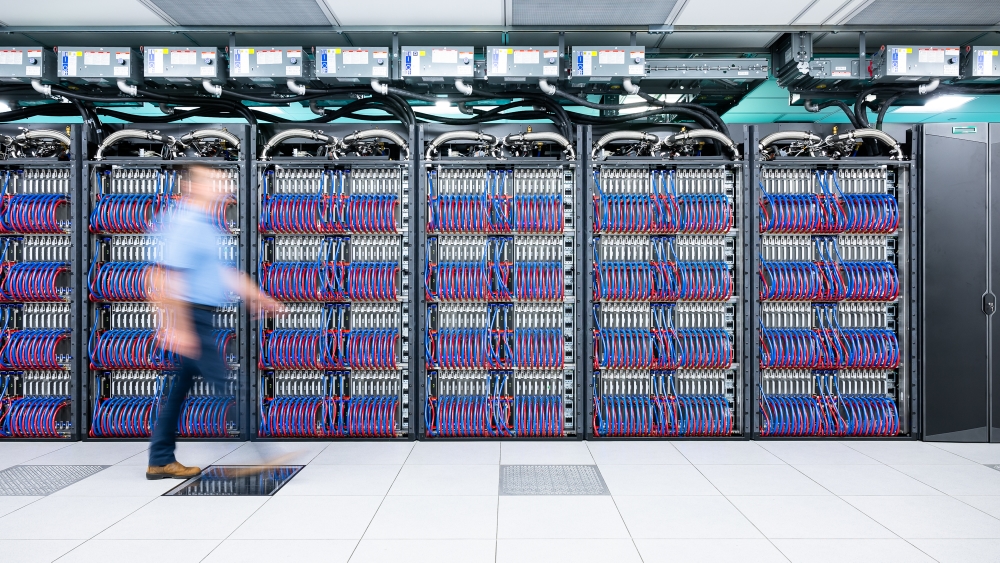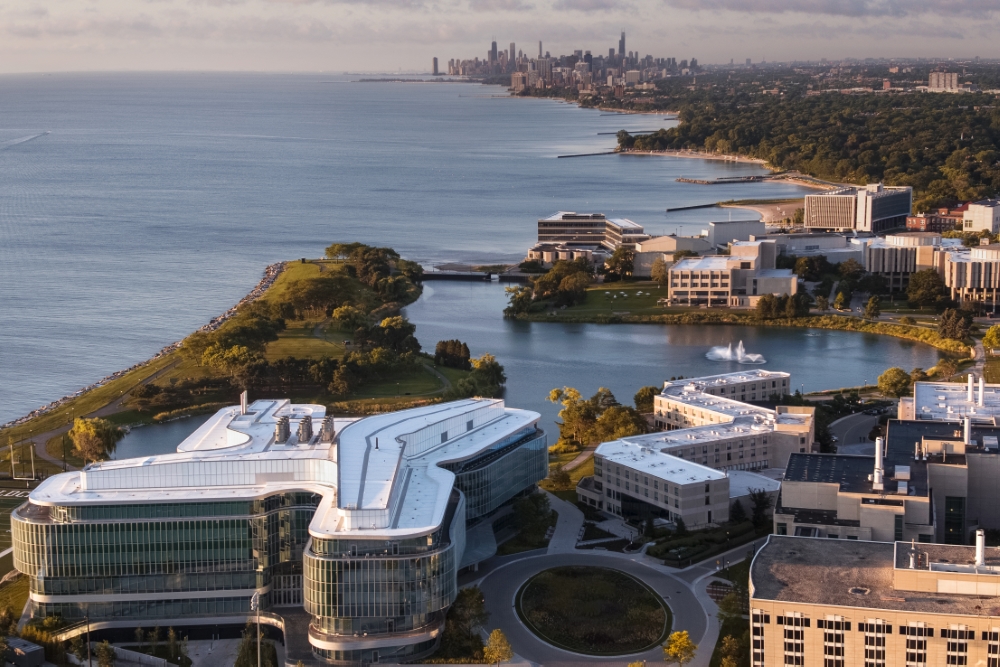By number of higher education institutions receiving federal obligations for science and engineering in FY2023, Illinois ranked No. 6 in the nation with 48 schools receiving nearly $1.9 billion, the National Science Foundation reported in 2025.
It’s safe to say the state’s colleges and universities have a penchant for industry partnership and pioneering R&D. Drawn from university newsrooms, these highlights from a cross-section of those institutions show where the scientific research is going … and where economic development is likely to follow.
Southern Illinois University Carbondale
In May 2025, SIU Carbondale reached rarefied air: After attaining the designation of Research 1: Very High Spending and Doctorate Production (R1) from the Carnegie Classifications of Institutions of Higher Education in February, the school learned it was one of 479 schools earning the Opportunity Colleges and Universities designation, part of Carnegie’s new Student Access and Earnings Classification, which measures whether institutions are enrolling and creating opportunities for students in communities they serve and whether students earn competitive wages after they attend. SIU Carbondale is one of only 21 schools to attain both designations.
SIU Carbondale is one of six R1 universities in Illinois, including Loyola University Chicago, Northwestern University, University of Chicago, University of Illinois Urbana-Champaign and U of I Chicago. In 2023, SIU Carbondale had 102 research doctorates and $58.3 million in research expenditures, a university release stated, helped not only by work on the Carbondale campus in such areas as rare earth element recovery, cognitive computing and unleaded aviation fuel, but also the School of Medicine campus in the state capital of Springfield.
Southern Illinois University Edwardsville
For the fiscal year ended in June 2024, SIUE’s Office of Research & Projects reported 188 research and project awards valued at more than $33 million. Among the most significant were 17 awards worth nearly $4 million that went to the National Corn-to-Ethanol Center at SIUE.
In March 2025, a 55,000-sq.-ft. workspace, research lab and social impact hub in downtown Alton, Illinois, called The Wedge and SIUE announced a partnership that they said will “transform the economic landscape of the greater Alton Metro Region” when The Wedge opened in April.
“This partnership represents a pivotal moment for our region,” said AltonWorks CEO John Simmons. “By bringing together SIUE’s research capabilities and educational programming with The Wedge’s innovative workspace, we’re creating unprecedented opportunities for economic growth, workforce development and community engagement.” The project followed the installation of a $20 million 10G fiber network made possible by funding from the State of Illinois.
Northern Illinois University
In May 2025, the NIU Engineering at RVC (Rock Valley College) team took Grand Champion honors for the second year in a row at the National Fluid Power Association (NFPA) national competition in Ames, Iowa, which involves the construction and operation of a specially designed bicycle. The NIU Engineering Program at Rock Valley College in Rockford was formed in 2016 in collaboration with regional industry partners to foster talent in the Rockford area. Students can earn their associate degree in engineering from RVC and go on to earn a bachelor’s in engineering from NIU, all on the RVC campus in Rockford. A crucial industry partner to the institutions and to the NFPA competition is Danfoss Drives, a manufacturer based in the Rockford area.
Ongoing work at NIU includes projects backed by federal grants that focus on lithium-ion batteries, superconducting microelectronics and hail storms.
Illinois State University
The state’s first public university is located in Normal, where Rivian continues to invest in a major manufacturing complex. Rivian Director of Trade Compliance Julie Hoeniges in May 2025 was appointed to serve as a member of the ISU Board of Trustees. A total of $31.6 million in external grant funding has been awarded to Redbird scholars, the school notes. Among the school’s innovations are the creation of the ARCS (Advancing Research and Creative Scholarship) program to support interdisciplinary scholarship; a new Connected Communities Initiative between ISU and OSF HealthCare; a new data science degree program; and the establishment of a new college of engineering.
Home to more than 20,000 students, Illinois State is also home to such industry partnership resources as the Illinois Innovation Network hub; the Adlai Stevenson II Center for community and economic development; the Center for Insurance and Risk Management; and the Means Center for Entrepreneurial Studies.
University of Illinois Urbana-Champaign
In March 2025, Wolf Creek Farm, based in Williamsville, was named the recipient of the Glen “GB” Brandt Prize for Ag Entrepreneurism at the 2025 AgTech Innovation Summit hosted by the University of Illinois Research Park, which is home to more than 120 companies and more than 2,000 affiliated employees. Over the years it’s supported more than 350 startups with an array of assets that include Class A office space, wet labs, prototyping labs, light manufacturing, the EnterpriseWorks incubator and LabWorks, a facility that opened in early 2024 to support growth-stage, deep-tech and science-based startups.
Governor JB Pritzker and the Illinois Department of Commerce and Economic Opportunity (DCEO) in July 2025 awarded EnterpriseWorks $3 million through the state’s Tech Incubator Enhancement Grant Program in order to help the university move forward with a second incubator.
“The $20 million project has been scoped to align with growing opportunities in bioprocessing and light manufacturing across the region within the Illinois Fermentation and Agriculture Biomanufacturing Hub,” the university announced. Since its opening in 2003, companies launched at EnterpriseWorks have raised over $1.4 billion in venture capital and $200 million in Small Business Innovation Research federal grant funding.
In November 2024, the Center for Advanced Bioenergy and Bioproducts Innovation (CABBI) opened the $252.5 million, U.S. Department of Energy-funded Plant Biology Innovation Greenhouse in Research Park.

With a ribbon cutting in July 2025, Argonne National Laboratory has fully opened its Aurora exascale supercomputer, built in partnership with Intel and Hewlett Packard Enterprise, to researchers around the world.
Photo by Argonne National Laboratory
Northwestern University
With more than $600 million in federal obligations for science and engineering in FY2023, Northwestern University ranked No. 18 in the nation. A new steering committee looks to further leverage data science and artificial intelligence (DS/AI) to enhance research and boost discovery.
“By embracing our unique cross-disciplinary strengths,” said Northwestern University President Michael Schill, “we can make groundbreaking contributions to shape the future of DS/AI and address society’s most pressing challenges.”
NAISE, a collaborative research initiative founded in 2011 as a partnership between Northwestern and Argonne National Laboratory, serves as a multidisciplinary hub that bridges the expertise and resources of both institutions, fostering cutting-edge research in materials science, energy, environmental sustainability and computational modeling.
In September 2024, the Center for Regenerative Nanomedicine (CRN), formerly part of the now-closed Simpson Querrey Institute for BioNanotechnology (SQI), became a standalone University Research Institute and Center (URIC), one of nearly two dozen at the campus that engage around 700 faculty members from more than 100 departments.
Materials are certainly material to efforts by Northwestern engineers in the new US National Science Foundation Human AugmentatioN via Dexterity Engineering Research Center (HAND ERC), where they are working to develop dexterous, intelligent robot hands with the ability to assist humans with manufacturing, caregiving and the handling of precious or dangerous materials.
“We’re working toward the day, probably a decade down the road, when a small manufacturing firm can hire people who know its business, are not programmers, but can buy a manufacturing robot and put it to use very quickly and quite differently from the way robots are used today,” said Professor J. Edward Colgate, director of HAND ERC, who with a colleague in the early 1990s invented new collaborative robots or “cobots” in partnership with General Motors.
University of Chicago
On July 24 at the Global Quantum Forum in Chicago, IBM and the University of Chicago announced their intent to offer startups at the university’s Duality quantum accelerator resources and support to develop quantum software and explore algorithms and applications that could help unlock the potential of quantum computers. This includes access to the IBM Quantum System Two planned to be deployed at the Illinois Quantum and Microelectronics Park (IQMP), a multibillion-dollar, 128-acre public-private development located on the site of a former U. S. Steel South Works plant near the mouth of the Calumet River on Chicago’s Southeast Side.
The park will include shared cryogenic facilities, equipment labs and research spaces.
Duality is the nation’s first quantum startup accelerator led by multiple research and industry leaders, including the Polsky Center for Entrepreneurship and Innovation at the University of Chicago and the Chicago Quantum Exchange, along with founding partners the University of Illinois Urbana-Champaign, Argonne National Laboratory and P33.

